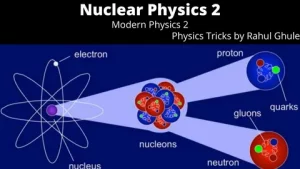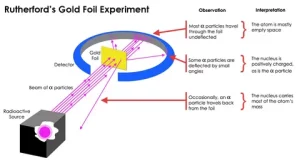Particle physics is a fascinating branch of science that delves into the fundamental building blocks of the universe. From the smallest constituents of matter to the most elusive particles, this field explores the mysteries of existence at the subatomic level.
Introduction to Particle Physics
What is Particle Physics?
Particle physics, also known as high-energy physics, is the study of the fundamental particles and forces that make up the universe. It aims to understand the nature of matter, energy, space, and time at their most basic levels.
Importance of Particle Physics in Science
Particle physics plays a crucial role in advancing our understanding of the universe’s fundamental laws. It provides insights into the origins of the cosmos, the behavior of matter and energy, and the underlying structure of reality.
History of Particle Physics
Early Discoveries
The journey of particle physics began with the discovery of subatomic particles such as electrons, protons, and neutrons. Early experiments laid the groundwork for understanding the nature of matter and energy.
Development of Quantum Mechanics
The advent of quantum mechanics revolutionized particle physics, introducing concepts like wave-particle duality and probabilistic behavior. Pioneering scientists like Max Planck, Albert Einstein, and Erwin Schrödinger paved the way for modern quantum theory.
Subatomic Particles
Classification of Subatomic Particles
Subatomic particles are classified into two categories: fermions and bosons. Fermions, such as quarks and leptons, make up matter, while bosons mediate the fundamental forces of nature.
Properties of Quarks and Leptons
Quarks are the building blocks of protons and neutrons, while leptons include particles like electrons and neutrinos. These particles exhibit unique properties that contribute to the diversity of matter in the universe.
The Standard Model

Overview of the Standard Model
The Standard Model of particle physics is a theoretical framework that describes the fundamental particles and forces of nature. It encompasses the electromagnetic, weak, and strong nuclear forces, as well as the Higgs mechanism.
Fundamental Forces and Gauge Bosons
The four fundamental forces—gravity, electromagnetism, the weak force, and the strong force—are mediated by gauge bosons. These particles exchange energy and momentum, governing the interactions between matter particles.
Quantum Field Theory
Explanation of Quantum Field Theory
Quantum field theory combines quantum mechanics with special relativity to describe the behavior of particles and fields. It treats particles as excitations of underlying fields permeating spacetime.
Role of Symmetry in Particle Physics
Symmetry principles play a crucial role in particle physics, guiding the formulation of fundamental laws and predicting the behavior of particles. Symmetry-breaking processes lead to the emergence of mass and diversity in the universe.
Particle Accelerators
Purpose and Functionality of Particle Accelerators
Particle accelerators are essential tools for probing the fundamental constituents of matter. They accelerate charged particles to high energies, allowing scientists to create and study exotic particles under controlled conditions.
Major Particle Accelerator Facilities
Prominent particle accelerator facilities include the Large Hadron Collider (LHC) at CERN, the Fermi National Accelerator Laboratory (Fermilab), and the SLAC National Accelerator Laboratory. These facilities enable groundbreaking research in particle physics.
Recent Discoveries and Breakthroughs
Higgs Boson Discovery
The discovery of the Higgs boson in 2012 confirmed the existence of the Higgs field, which endows particles with mass. This breakthrough validated the Standard Model and provided insights into the origin of mass.
Beyond the Standard Model
Despite the success of the Standard Model, several phenomena remain unexplained, such as dark matter, dark energy, and neutrino oscillations. Exploring these mysteries requires extending beyond the framework of current theories.
Unsolved Mysteries in Particle Physics
Dark Matter and Dark Energy
Dark matter and dark energy constitute the majority of the universe’s mass-energy content, yet their nature remains elusive. Understanding these phenomena is one of the most significant challenges in modern cosmology.
Matter-Antimatter Asymmetry
The observed imbalance between matter and antimatter in the universe poses a fundamental puzzle. Explaining this matter-antimatter asymmetry could shed light on the universe’s origins and evolution.
Applications of Particle Physics
Medical Imaging and Treatment
Particle physics technologies, such as positron emission tomography (PET) and proton therapy, have revolutionized medical diagnostics and treatment. They offer precise imaging capabilities and targeted cancer therapies.
Industrial Applications
Particle accelerators have diverse industrial applications, including materials science, semiconductor manufacturing, and food sterilization. These technologies contribute to technological advancements and innovation across various sectors.
Challenges and Future Prospects
Advancements in Experimental Techniques
Continued advancements in experimental techniques, such as higher energy colliders and precision detectors, will push the boundaries of particle physics research. These innovations enable scientists to explore new frontiers of knowledge.
Theoretical Frontiers
On the theoretical front, physicists are exploring new models beyond the Standard Model to address its limitations and reconcile quantum mechanics with gravity. Concepts like supersymmetry and string theory offer potential avenues for advancement.
Public Interest and Education

Popularization of Particle Physics
Efforts to popularize particle physics through documentaries, exhibitions, and outreach programs engage the public and inspire future generations of scientists. Increasing public awareness fosters support for scientific research and education.
Importance of STEM Education
Promoting STEM (science, technology, engineering, and mathematics) education is essential for nurturing the next generation of physicists and innovators. Investing in educational initiatives ensures a skilled workforce and fosters scientific literacy.
Ethical Considerations
Dual-Use Technologies
The development of particle physics technologies raises ethical concerns regarding their potential dual-use applications, including military and surveillance purposes. Ethical frameworks are needed to guide responsible research and technology development.
Responsible Research Practices
Practicing responsible research, including transparency, accountability, and consideration of societal impacts, is essential for maintaining public trust and ethical integrity in particle physics endeavors.
Collaborations and International Efforts
Role of International Organizations
Collaborative efforts among international organizations, such as CERN, foster scientific cooperation and exchange of knowledge. Multinational collaborations leverage diverse expertise and resources to tackle global scientific challenges.
Collaborative Research Projects
Joint research projects bring together scientists from different countries and disciplines to address complex scientific questions. These collaborations enhance the pace and scope of scientific discoveries in physics.
Theoretical vs. Experimental Physics
Contrasting Approaches
Theoretical physics focuses on developing mathematical models and theories to explain natural phenomena, while experimental physics involves testing these theories through observation and experimentation.
Complementary Roles
Theoretical and experimental physicists work in tandem to advance scientific knowledge, with each contributing unique insights and perspectives. Their collaborative efforts drive innovation and progress in physics research.
Conclusion
Particle physics offers a captivating journey into the heart of matter, unraveling the mysteries of the universe’s fundamental constituents and forces. Through theoretical exploration and experimental discovery, scientists continue to push the boundaries of knowledge, inspiring awe and curiosity about the cosmos.
_____________________________________________________________________________________
FAQs
What is physics?
Particle physics is the study of the fundamental particles and forces that make up the universe, aiming to understand the nature of matter, energy, space, and time at their most basic levels.
Why is particle physics important?
Physics advances our understanding of the universe’s fundamental laws, providing insights into the origins of the cosmos and the underlying structure of reality.
What are some practical applications of physics?
Physics technologies have practical applications in medical imaging and treatment, industrial processes, and materials science, contributing to technological advancements and innovation.
What are the major challenges in particle physics?
Major challenges in physics include understanding phenomena like dark matter, dark energy, and matter-antimatter asymmetry, as well as extending beyond the limitations of the Standard Model.
How can I get involved in physics research?
Getting involved in physics research typically requires a background in physics or related fields, along with opportunities for collaboration and participation in experimental or theoretical projects.












